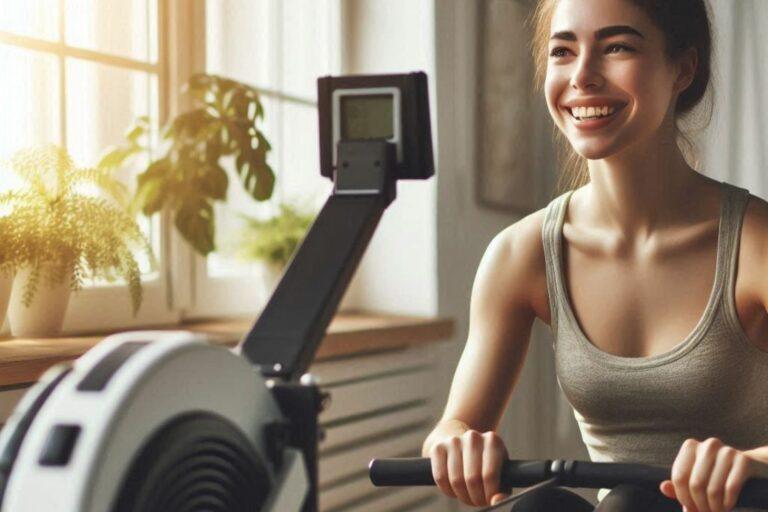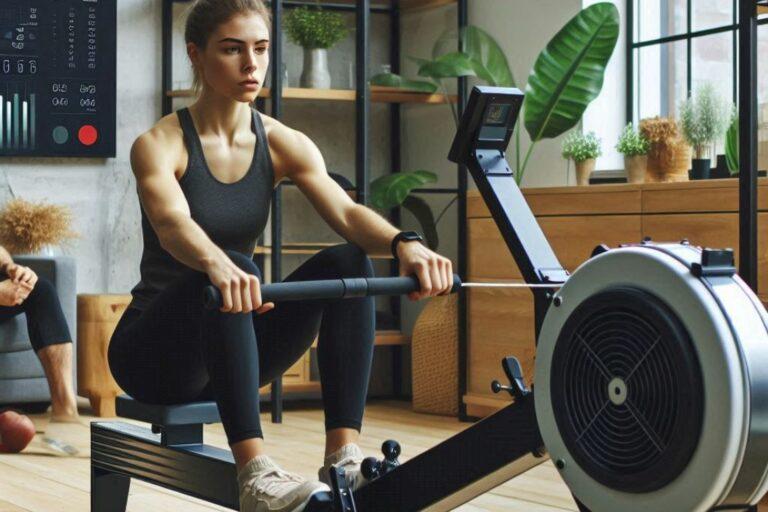Are you looking to enhance your fitness routine with a versatile and effective exercise?
Rowing can be a valuable addition to your cross-training regimen, offering a full-body workout that benefits both your cardiovascular health and strength.
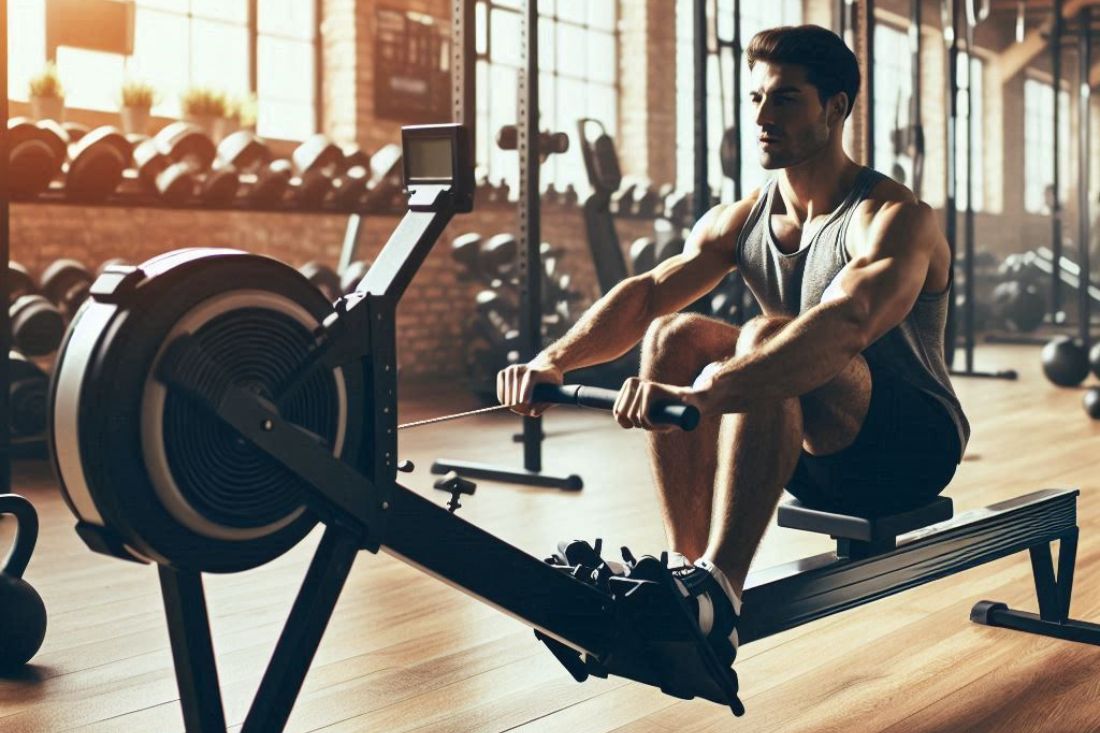
In this guide, we’ll explore the numerous advantages of incorporating rowing into your cross-training routine and provide practical tips for integrating it seamlessly into your fitness plan.
Let’s dive in and discover how rowing can elevate your workouts and take your fitness to new heights.
Benefits of Rowing for Cross-Training
Rowing offers a unique set of benefits that can enhance your overall fitness when incorporated into a cross-training routine:
Full-Body Workout
Rowing engages multiple muscle groups, providing a comprehensive workout that targets your legs, core, back, and arms.
This can help you develop a balanced physique and improve overall strength.
Low-Impact Exercise
Rowing is a low-impact exercise, making it suitable for people of all ages and fitness levels.
It reduces stress on joints, making it a great option for those recovering from injuries or experiencing joint pain.
Improved Cardiovascular Health
Regular rowing can significantly improve your cardiovascular health.
It helps strengthen your heart, increase lung capacity, and improve endurance.
This can lead to better overall health and reduced risk of heart disease.
Enhanced Strength and Endurance
Rowing is an excellent way to build both strength and endurance.
The repetitive motion of rowing helps to develop muscular strength and endurance in the targeted muscle groups.
By understanding these benefits, you can appreciate the value of incorporating rowing into your cross-training routine.
Key Takeaways
- Full-body workout: Rowing engages multiple muscle groups.
- Low-impact exercise: Suitable for individuals with joint pain.
- Improved cardiovascular health: Enhances heart health and endurance.
- Enhanced strength and endurance: Builds both strength and endurance.
Incorporating Rowing into Your Workout Routine
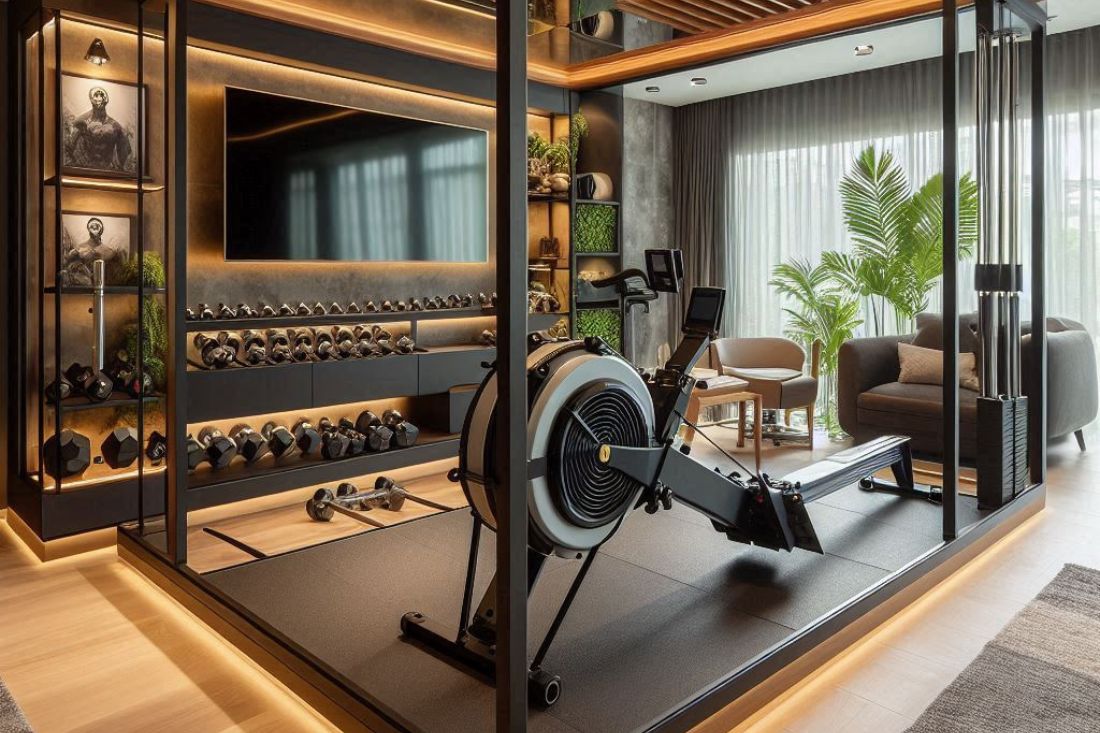
To effectively integrate rowing into your cross-training routine, consider the following factors:
Frequency and Duration
- Start gradually: Begin with 2-3 rowing sessions per week to allow your body to adapt.
- Increase intensity: As you become more comfortable, gradually increase the duration or intensity of your rowing workouts.
- Listen to your body: Pay attention to your body’s signals and take rest days when needed.
Workout Structure
- Interval training: Alternate between high-intensity rowing intervals and recovery periods.
- Circuit training: Combine rowing with other exercises for a full-body workout.
- Steady-state rowing: Maintain a consistent pace for endurance training.
Combining Rowing with Other Exercises
- Strength training: Pair rowing with weightlifting or bodyweight exercises for a well-rounded routine.
- Cardiovascular exercises: Combine rowing with running, cycling, or swimming for variety.
- Cross-training benefits: Reduce the risk of overuse injuries, improve overall fitness, and prevent boredom.
By strategically incorporating rowing into your workout routine, you can maximize its benefits and achieve your fitness goals.
Key Takeaways
- Frequency and duration: Start gradually and increase as you progress.
- Workout structure: Experiment with interval training and circuit training.
- Combining with other exercises: Create a well-rounded routine.
Sample Workout Routines
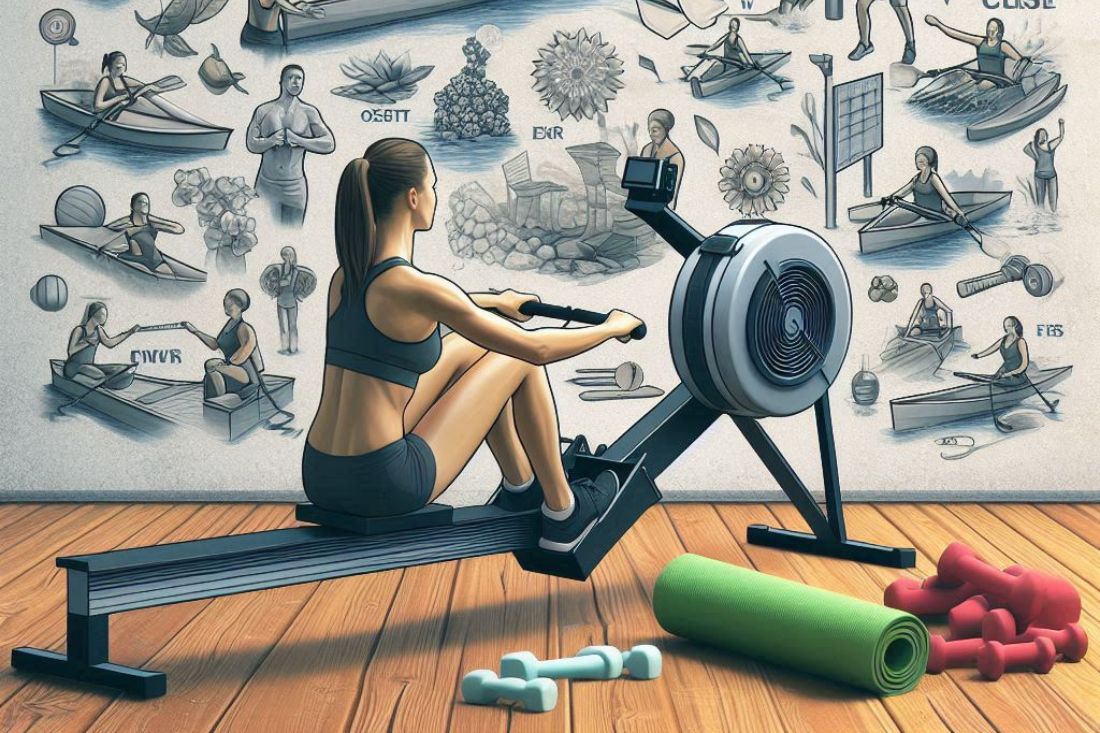
Beginner Workout
- Warm-up: 5 minutes of light rowing
- Main set: 20 minutes of steady-state rowing
- Cool-down: 5 minutes of easy rowing and static stretches
Intermediate Workout
- Warm-up: 5 minutes of dynamic stretches
- Main set: 30 minutes of interval training (e.g., 30 seconds high intensity, 30 seconds rest, repeat 10 times)
- Cool-down: 5 minutes of easy rowing and static stretches
Advanced Workout
- Warm-up: 10 minutes of dynamic stretches and light rowing
- Main set: 45 minutes of circuit training, alternating between rowing and strength exercises (e.g., squats, push-ups, lunges)
- Cool-down: 5 minutes of easy rowing and static stretches
Remember to adjust the intensity and duration of your workouts based on your fitness level and goals.
Table: Sample Rowing Workouts
| Workout Type | Description | Intensity |
|---|---|---|
| Interval Training | Alternate between high-intensity rowing intervals and rest periods. | High |
| Circuit Training | Combine rowing with other exercises in a circuit format. | Moderate to High |
| Steady-State Rowing | Maintain a consistent pace for extended periods. | Moderate |
| Pyramid Training | Gradually increase intensity and then decrease in a pyramid shape. | Moderate to High |
This table provides a visual representation of different workout structures, allowing readers to easily compare and choose the best option for their fitness goals.
Key Takeaways
- Beginner-friendly: Focus on building endurance and proper form.
- Intermediate and advanced: Increase intensity and duration.
Tips for Success
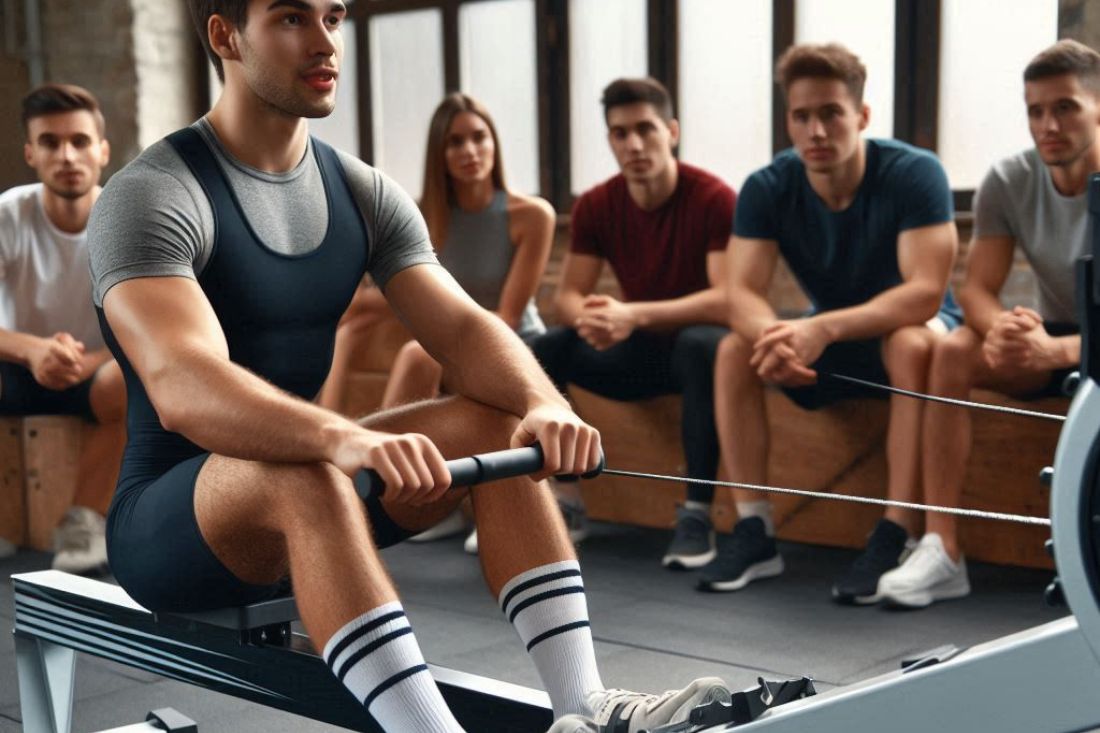
To maximize the benefits of rowing and ensure a positive experience, keep these tips in mind:
Proper Rowing Technique
- Master the basic stroke: Focus on proper form to prevent injuries and optimize performance.
- Seek guidance: If you’re unsure about your technique, consider taking rowing lessons or consulting with a fitness professional.
Gradual Progression
- Start slowly: Begin with shorter workouts and gradually increase duration and intensity.
- Listen to your body: Avoid overexertion and take rest days when needed.
Listening to Your Body
- Pay attention to signals: If you experience pain or discomfort, adjust your workout or take a break.
- Avoid burnout: Balance your workouts with rest and recovery.
By following these tips, you can ensure a successful and enjoyable rowing experience.
Key Takeaways
- Proper rowing technique: Master the basic stroke for optimal results.
- Gradual progression: Avoid overexertion and listen to your body.
- Stay motivated: Set goals, find a workout buddy, and reward yourself.
Additional Considerations
To fully optimize your rowing experience, consider these additional factors:
Equipment Compatibility
- Check compatibility: Ensure your rowing machine is compatible with any existing fitness equipment or accessories.
- Accessories: Explore optional accessories like heart rate monitors or tablet holders to enhance your workout.
Space Requirements
- Measure your space: Ensure you have enough room for the rowing machine and a comfortable rowing path.
- Consider foldable options: If space is limited, opt for a foldable rowing machine for easier storage.
Nutrition and Hydration
- Fuel your body: Consume a balanced diet to provide the energy needed for your workouts.
- Stay hydrated: Drink plenty of water before, during, and after your rowing sessions.
By addressing these additional factors, you can create a more enjoyable and effective rowing experience.
Key Takeaways
- Equipment compatibility: Ensure your rowing machine is compatible with other equipment.
- Space requirements: Consider the size of your workout area.
- Nutrition and hydration: Fuel your body adequately for optimal performance.
FAQs: Incorporating Rowing into Your Cross-Training Routine
Here are some frequently asked questions about rowing and cross-training:
- How often should I incorporate rowing into my cross-training routine?
- Aim for 2-3 rowing sessions per week to start. Gradually increase frequency as you build endurance.
- Can I use a rowing machine outdoors?
- While some portable rowing machines are available, most are designed for indoor use. Outdoor rowing machines, such as water rowers, offer a different experience but require specific conditions.
- What is the best time of day to row?
- The best time to row depends on your personal schedule and preferences. Some people find that morning workouts are more energizing, while others prefer evening sessions.
- Can rowing help with weight loss?
- Yes, rowing can be an effective way to burn calories and contribute to weight loss. Combine it with a balanced diet and regular exercise for optimal results.
Testimonials
Here below are testimonials from individuals who have successfully integrated rowing into their cross-training routines.
“Incorporating rowing into my cross-training routine has been a game-changer! I’ve noticed a significant improvement in my overall strength and endurance. It’s a great low-impact workout that complements my other activities.” – Sarah K.
“I used to dread rowing, but now it’s one of my favorite parts of my workout routine. Combining it with weightlifting has helped me achieve a more balanced physique.” – David M.
“As a busy mom, finding time for exercise can be challenging. Rowing has been a great way to fit in a workout without leaving the house. I love the versatility of being able to do different types of workouts on the rowing machine.” – Emily P.
Conclusion
Incorporating rowing into your cross-training routine offers a multitude of benefits, including a full-body workout, improved cardiovascular health, and enhanced strength and endurance.
By following the tips and guidelines outlined in this guide, you can effectively integrate rowing into your fitness regimen.
Remember:
- Start gradually and listen to your body.
- Experiment with different workout structures and intensity levels.
- Consider your fitness goals and available space when selecting a rowing machine.
Ready to take your rowing to the next level? Explore our additional resources for more workout ideas, rowing techniques, and equipment recommendations.
Reference
High-Intensity Interval Training for Rowing: Acute Responses in National-Level Adolescent Males. National Institutes of Health (NIH) (.gov)

